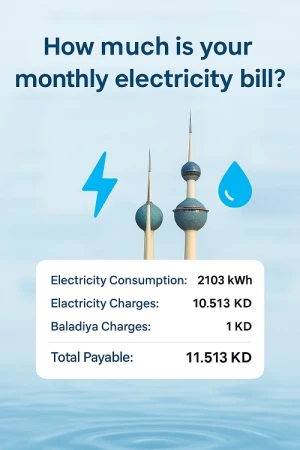Latest News
- Best Pizza In Kuwait: Top Brands And What To Order
- Best Budget-Friendly Chalets & Villas In Kuwait For Weekend Geta...
- Why Electricity Bills Are Rising In Kuwait & Smart Ways Expats C...
- App Store Optimization: Why It’s Becoming A Core Part Of SEO Str...
- Best Shower Filters In Kuwait For Hair Fall And Skin Protection
- Exness Sets A New Standard Of Consistency In The Trading Industr...
- Instant Withdrawals In Trading – A Game Changer For Traders In K...
- Best Abaya Shop In Kuwait: Editorial Review Of Abay.com
- IPhone 17 In Kuwait: Prices, Colors, Specs & Where To Buy
- Best Drinking Water Filter For Home In Kuwait
- Avoid Common Qatar E-visa Application Mistakes. Learn The Top 5...
- How To Cancel Electricity Connection & Get Security Deposit Refu...
Why Kuwait Is One Of The Hottest Places On Earth
Just in the past two weeks, Kuwait recorded the highest temperatures in the world. On Friday, the temperature in the northern city of Al Jahra touched 53.5°C. Similarly, two weeks ago Nuwaiseeb, south of Kuwait City on the border with Saudi Arabia, recorded the highest temperature in the world for 2021, with a record 53.2°C.
“On average during this period, temperatures are not supposed to exceed 46°C but Kuwait is experiencing temperatures above the average by 3 to 4 degrees,” Essa Ramadan, a Kuwaiti meteorologist, told Gulf News.
In the past few years, Kuwait has been witnessing sizzling temperatures. Back on July 21, 2016, the northern city of Mitribah reached 53.9 °C making it the hottest recorded temperature on earth ever.
The 10 warmest years in the history of Kuwait have all been recorded since 2005, with the seven hottest having occurred since 2014.
New normal
Ramadan explained, “In the 1960s and 1970s, the temperature never reached what we see today. In the past 30 years, we started recording higher temperatures and the average temperature of 50 degrees became normal.”
Ramadan said there were multiple factors contributing to the fact that Kuwait is one of the hottest countries in the world, ranging from it’s geographical location to the angle of the sun’s rays.
Solar radiation
Kuwait’s proximity to the equator naturally makes it prone to higher temperatures. It’s location also means Kuwait attracts more solar radiation, which is more than 80 degrees, Ramadan explained.
According to the Climate Science Investigations (CSI) unit at NASA, the sun’s rays that hit close to the equator result in more direct solar radiation. Thus, the more the solar radiation is concentrated in a small area, the warmer the temperature.
Ramadan added the combination of low levels of vegetation and trees coupled with growing infrastructure, especially buildings, have also contributed to the rising temperatures.
SOURCE GULFNEWS





